
At the Humane Society of Loudoun County (HSLC), every animal we help is a life changed—sometimes even saved. But we can’t do it alone. That’s why we’re inviting you to take one simple step that can make a world of difference: become a Pet Partner through monthly giving.
More Care for Them—All Year Long
As a Pet Partner, your monthly gift provides lifesaving funds to dogs and cats in need—every single day, all year long. Whether it’s covering emergency vet care, food, or spay/neuter surgeries, your consistent support means we can always be ready to help.
- Small gifts add up. Even $10 a month can provide vaccinations for a pet entering foster care. Imagine what $25 or $50 can do!
- Reliable support. Monthly donations help HSLC plan ahead, knowing how many animals we can take in and care for, thanks to your dependable generosity.
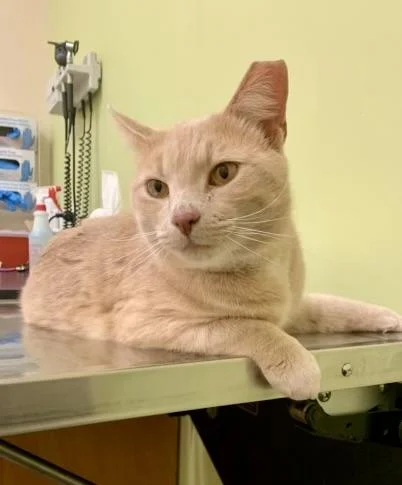
More Convenience for You
We’ve made giving easier than ever—so you can focus on the love you’re giving without the hassle.
- Your gift is automatically deducted each month.
- No checks to write, no stamps to find.
- Manageable contributions that fit your budget.
- Tax deductible and easy to track at the end of the year.
- You’ll be recognized as one of the animals’ most loving and reliable friends!
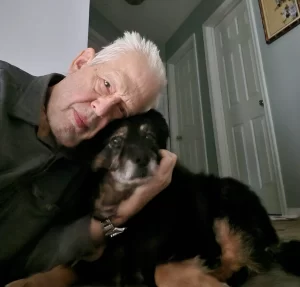
Get Started Today
Monthly giving is one of the most effective ways you can support HSLC. It’s convenient for you—and absolutely life-changing for the animals we serve. Your ongoing support ensures we never have to say no when an animal needs us.
Become a Pet Partner today. Once you click through, simply select your recurring donation amount and set the donation frequency to “monthly”. Your donation will be automatically charged to the credit card of your choice each month until you cancel, and you’ll be part of a compassionate community committed to helping more animals. Thank you for your kind and lifesaving support!
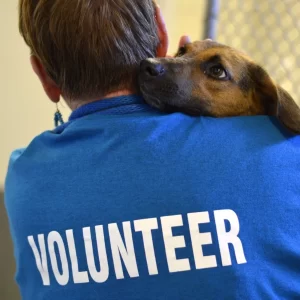
By Uchenna C. Ukeke
Volunteering is not just a simple act of kindness that benefits the community. It can also benefit you personally and professionally. And the best part? It doesn’t require wealth, fame, or perfection—just willingness. Discover how volunteering can unlock purpose and fuel growth in your life, while also enhancing the lives you touch.
Personal Growth
- Developing Emotional Intelligence: Volunteering exposes you to different perspectives and challenges, helping you develop empathy and resiliency. This increased emotional awareness improves your relationships and boosts your ability to connect and communicate with others in your life.
- Boosting Confidence: Volunteering is a powerful confidence booster. By dedicating your time and efforts to helping others, you gain a deep sense of accomplishment and self-worth. Seeing the direct impact of your work reinforces the value of your contributions, and this recognition enhances your belief in your abilities. Volunteering also helps you build new skills which can also boost your self-esteem.
- Finding Purpose and Fulfilment: By supporting causes that matter to you, like animal rescue, you become part of something greater than yourself. Volunteering provides meaning and fulfilment knowing that your efforts are making a real difference in the lives of others.
- Making Friends: Volunteering is a great way to meet new friends. As a volunteer, you’ll interact with people from diverse backgrounds and yet share a common interest. Some volunteers remain friends for life.
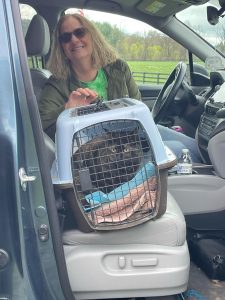
Professional Benefits
- Enhancing Your Resume/CV: Volunteering offers valuable hands-on experience that boosts your career. Whether you are managing a project or running an event, volunteering provides opportunities to refine existing skills and develop new ones, including leadership, teamwork, time management, and problem-solving. This practical experience can help fill gaps in your resume, especially if you’re changing careers, entering the workforce, or looking to climb the corporate ladder.
- Expanding Your Network: Volunteering gives you the opportunity to meet people from various professional backgrounds, whether it’s with fellow volunteers, community leaders, or like-minded professionals. These connections help expand your network and are valuable for both personal and career growth.
- Building Career Credibility: Volunteering demonstrates your commitment, passion, and reliability. It shows that you’re proactive, socially responsible, and willing to contribute beyond your job. These qualities not only benefit the causes you care about but also help your professional growth.
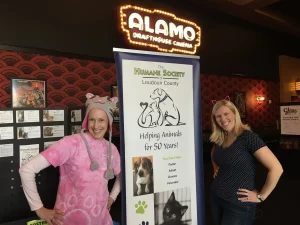
Volunteering with HSLC
Volunteering with the Humane Society of Loudoun County (HSLC) offers you the chance to make a real difference—for animals, for the community, and for yourself. HSLC provides opportunities for meaningful engagement that supports both personal development and community impact.
Ready to find your purpose and grow through giving back? Click here for HSLC’s most pressing needs. If you don’t see something of interest, please complete an application and we will work to find a role that’s right for you!
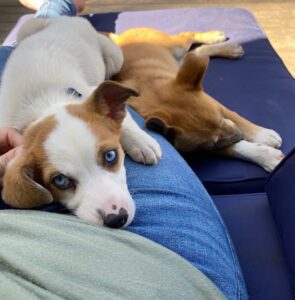
By Uchenna C. Okeke
Many people hesitate to foster because they fear becoming attached. If you’ve ever thought about fostering a rescued animal, this concern may have crossed your mind. But, is this fear of attachment really a reason to hold you back from fostering? What you discover may change your mind forever.
Attachment is Strength
Attachment isn’t a weakness, it’s a strength! It means you’re making an impact. It shows you have the love and compassion to change an animal’s life. Fostering isn’t just about providing food and shelter; it’s about offering love, stability, and care to an animal in need. The bond you form isn’t something to fear, it’s part of the journey.
As dog and cat foster caregiver, Blaire, puts it: “You get attached because you have a big heart. But part of loving them is wanting to see them find THEIR people, and understanding that if you keep them, you can’t help more. Always go into it knowing this is only temporary, ‘goodbye is the goal.’ The peace of knowing they found their forever home really does quell the sadness of letting go.”
Every Goodbye Means Another Life Saved
Letting go is never easy, but it can be deeply rewarding. Each time you foster, you not only help one cat or dog, but you also make space for another animal in need. The beauty of fostering lies in this ongoing cycle of love and rescue.

While goodbyes can be tough, remember that your role as a foster parent is key to saving lives. And if you find the perfect match for your family, adoption with HSLC is also an option! Many fosters choose to adopt, and that’s part of the journey, too.
Why Foster?
Fostering is a powerful way to make a difference in the lives of animals. It offers pets love, care, and a secure environment – often something they have never experienced before. By opening your home, you help them build confidence and develop social skills, preparing them for their future forever family.
Diane, who has been fostering for 20 years, says: “Fostering allows me to save a homeless dog. Every time I bring one in, I’m not just helping them – I’m also creating space for another dog at the shelter (or rescue). Without fosters, rescues wouldn’t have the ability to take in more animals. That’s the core of why fostering is so vital.”
Diane’s experience highlights how the impacts of fostering far surpass the difficulty of saying goodbye.

Flexible Fostering Options
Fostering can fit into various lifestyles. Whether you can commit long-term or just for a short time, every effort matters. Consider these options:
- Short-term fosters: If you can only foster for a few weeks, you can still make a huge difference.
- Vacation fosters: Providing a temporary home for a dog or cat while another foster is out of town is a great way to test-drive fostering.
- Fospice foster: Giving a senior or terminally ill dog or cat love and comfort in their final months is often seen as a privilege.
Will You Foster?
The Humane Society of Loudoun County is only able to save a handful of dogs in any given year because of a shortage of fosters. And yet, there are so many dogs that are waiting for their second chances. The only thing standing in their way is available foster homes. Will you be their hero?
Contact us at foster@humaneloudoun.org for more information about fostering or visit the HSLC website to learn more and complete a no-obligation application.

May 2 @ 6:00 pm – 8:00 pm

The Humane Society of Loudoun County will be bringing adoptable felines to Leesburg First Friday on May 2. Be sure to stop by and meet the kitties up close and in purr-son at Coldwell Banker Realty!
Related Events
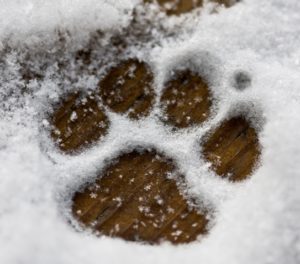
When the weather outside is frightful, these winter pet tips can keep your precious pets snug, safe, and warm.
1. Winter wellness: Has your pet had his/her preventive care exam (wellness exam) yet? Cold weather may worsen some medical conditions such as arthritis.
2. Know the limits: Just like people, pets’ cold tolerance can vary from pet to pet based on their coat, body fat stores, activity level, and health. Be aware of your pet’s tolerance for cold weather, and adjust accordingly.
3. Provide choices: Just like you, pets prefer comfortable sleeping places and may change their location based on their need for more or less warmth. Give them some safe options to allow them to vary their sleeping place to adjust to their needs.
4. Stay inside. Cats and dogs should be kept inside during cold weather. It’s a common belief that dogs and cats are more resistant than people to cold weather because of their fur, but it’s untrue. Some may be more tolerant but no pet should be left outside for long periods in below-freezing weather.
5. Feed a little more. Pets burn extra energy by trying to stay warm in wintertime. Feeding your pet a little bit more during the cold weather months can provide much-needed calories. Also, make sure she has plenty of water to drink will help keep her well-hydrated and her skin less dry.
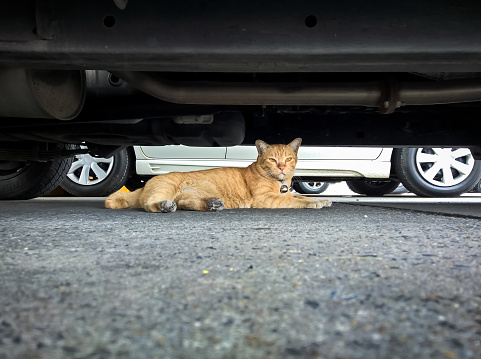
Outdoor cats may seek shelter in or around your car. Make it a habit to check for feline hitchhikers.
6. Make some noise: A warm vehicle engine can be an appealing heat source for outdoor and feral cats, but it’s deadly. Check underneath your car, bang on the hood, and honk the horn before starting the engine to encourage feline hitchhikers to abandon their roost under the hood.
7. Check the paws: Check your dog’s paws frequently for signs of cold-weather injury or damage, such as cracked paw pads or bleeding. You may be able to reduce the chance of iceball accumulation by clipping the hair between your dog’s toes.
8. Play dress-up: If your dog has a short coat or seems bothered by the cold weather, consider a sweater or dog coat.
9. Fur is warmth. Never shave your dog down to the skin in winter, as a longer coat will provide more warmth. If your dog is long-haired, simply trim him to minimize the clinging ice balls, salt crystals and de-icing chemicals that can dry his skin, and don’t neglect the hair between his toes
10. Wipe down: During walks, your dog’s feet, legs and belly may pick up deicers, antifreeze, or other chemicals that could be toxic. When you get back inside, wipe down (or wash) your pet’s feet, legs and belly to remove these chemicals and reduce the risk that your dog will be poisoned after (s)he licks them off of his/her feet or fur.
11. Icy Dangers: Antifreeze is poisonous to pets. Pour cat litter over any spills to soak up the liquid, then sweep up and dispose of it. Ice-melting products can also irritate animals’ skin, or upset their stomach if ingested. Choose a pet-safe variety for outdoor walkways, and always wipe down your pet’s paws and belly after walks to remove any chemicals or ice on his fur.
12. Be prepared: Cold weather also brings the risks of severe winter weather, blizzards and power outages. Prepare a disaster/emergency kit, and include your pet in your plans. Have enough food, water and medicine (including any prescription medications as well as heartworm and flea/tick preventives) on hand to get through at least 5 days.

By Uchenna C. Okeke
During seasons of gifting, our thoughts turn to the ones we love – including our furry friends. We want to give gifts that speak to their deepest needs and desires. A gift that will make their heart sing and their spirit soar. While fancy toys and treats can certainly be delightful, we want to give something far more precious. Read on to discover the most coveted gifts for your furry friend – quality time, good health and nourishment, comfort, and safety.
The Gift of Quality Time
In today’s busy world, it is easy to get caught up in our daily routines and forget to spend quality time with our pets. But pets need attention and interaction to stay happy and healthy. By spending quality time with your pet, you’re showing them that they’re important to you and that you care about their well-being.
Some ways you can spend quality time with your pet:
- Play with your pet: you can play fetch with your dog or use a laser pointer with your cat, or try a new activity such as agility training or swimming.
- Go for a walk: Taking your pet for a walk is a great way to get some exercise and fresh air while spending quality time with your pet.
- Cuddle on the couch: Sometimes, the simplest things are the best. Cuddling with your pet on the couch can be a great way to relax and bond with your pet.
- Simply be present: Sometimes, the best thing you can do for your pet is simply to be present. Sit with them, pet them, and enjoy their company.
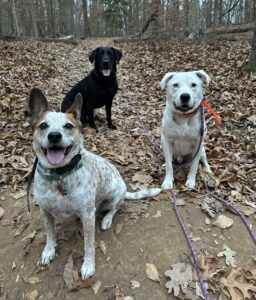
The Gift of Good Health and Nourishment
A healthy pet is a happy pet. Consider gifting your pet a veterinary check-up to ensure they are in good health. Regular health checks can help detect any potential issues early on, preventing more serious problems from developing.
A nutritious diet is essential for your pet’s overall health and well-being. Consider upgrading your pet’s food to a high-quality, balanced diet that meets their specific nutritional needs. Limit treats to ensure pets can keep a healthy weight.

The Gift of Comfort
Just like humans, pets need a comfortable and cozy place to rest and relax. Providing a warm and inviting space for your pet to snuggle up in can be a wonderful gift. Whether it’s a plush bed or a soft blanket, a comfortable place to sleep can help your pet feel relaxed and content.
Consider the following ideas to create a comfortable haven for your pet:
- Provide a warm and cozy bed or mattress
- Offer a soft blanket or a cozy throw for snuggling up
- Create a quiet and peaceful space for rest and relaxation
- Ensure good ventilation and a comfortable temperature
- Provide cozy and quiet hiding places.

The Gift of Safety
Providing a safe environment for your pet can help reduce stress and anxiety, and prevent injuries and illnesses. By taking steps to ensure your pet’s safety, you can give them the gift of peace of mind and a long, healthy life.
Consider the following ideas to create a safe environment for your pet:
- Pet-proof your home by securing toxic substances out of reach.
- Remove hazardous items like sharp objects.
- Provide a safe outdoor space with adequate fencing and shelter.
- Be prepared for emergencies with a pet first aid kit and a plan.
As you consider what gifts to give your pet, prioritize what truly matters to them. Give them the gifts that will bring them joy, comfort, and happiness.

It’s hard to believe but 2025 is just around the corner. Are you thinking about adopting one or two new animal-friendly habits in the new year? If so, we’re here to help. Below are just a few resolutions to choose from:
1) Keep your pets healthy by giving them regular checkups—at least once a year and keep current with vaccinations.
2) Make dental care a priority through daily brushing and regular professional dental exams and cleanings. As many as 85% of American dogs and cats show signs of dental disease by the age of three.
3) If you haven’t already, spay and neuter your pets. Doing so helps cut down on the number of homeless animals and keeps your pets healthier.
4) Give your pets plenty of attention. Animals left at home alone become bored and lonely. They can become destructive. Provide regular play sessions, walks for dogs, and petting and/or other appropriate interaction for all animals.

5) Go easy on the treats. More than 50% of our nation’s pets are overweight or obese and face a variety of health conditions, including heart disease, diabetes, arthritis, high blood pressure, and cancer.
6) Prepare for disasters—fires, floods, storms, and the like. Have an evacuation plan that includes your animal companions, and prepare a traveling kit to have on hand always.
7) Be a voice for the voiceless and use social media to encourage friends, family and co-workers to save a life by adopting, not shopping.
8) Fostering also saves lives. HSLC provides regular trainings for those who are interested in fostering. Contact us at foster@humaneloudoun.org if you’re interested in fostering or complete a no-obligation application on our website.

By Kathleen Silver
(Updated 2024)
So far this year, the Humane Society of Loudoun County (HSLC) has adopted out nearly 150 dogs and cats and trapped over 115 community cats to have them fixed, vaccinated and chipped. This life-saving work is only made possible thanks to the support of caring individuals like you!
HSLC is an all-volunteer, non-profit organization committed to rescuing and caring for as many homeless and at-risk animals as possible. But, since each foster animal in our care costs an average of $1,000*, we are limited to the number of animals we can take in. Most of our donations are applied to veterinary costs to prepare an animal for their forever home.
Your Donations in Action
Did you know that with a donation of only $25, we can treat an animal for fleas and deworm her? A $50 gift will provide needed vaccinations or pet food kits for five struggling families.
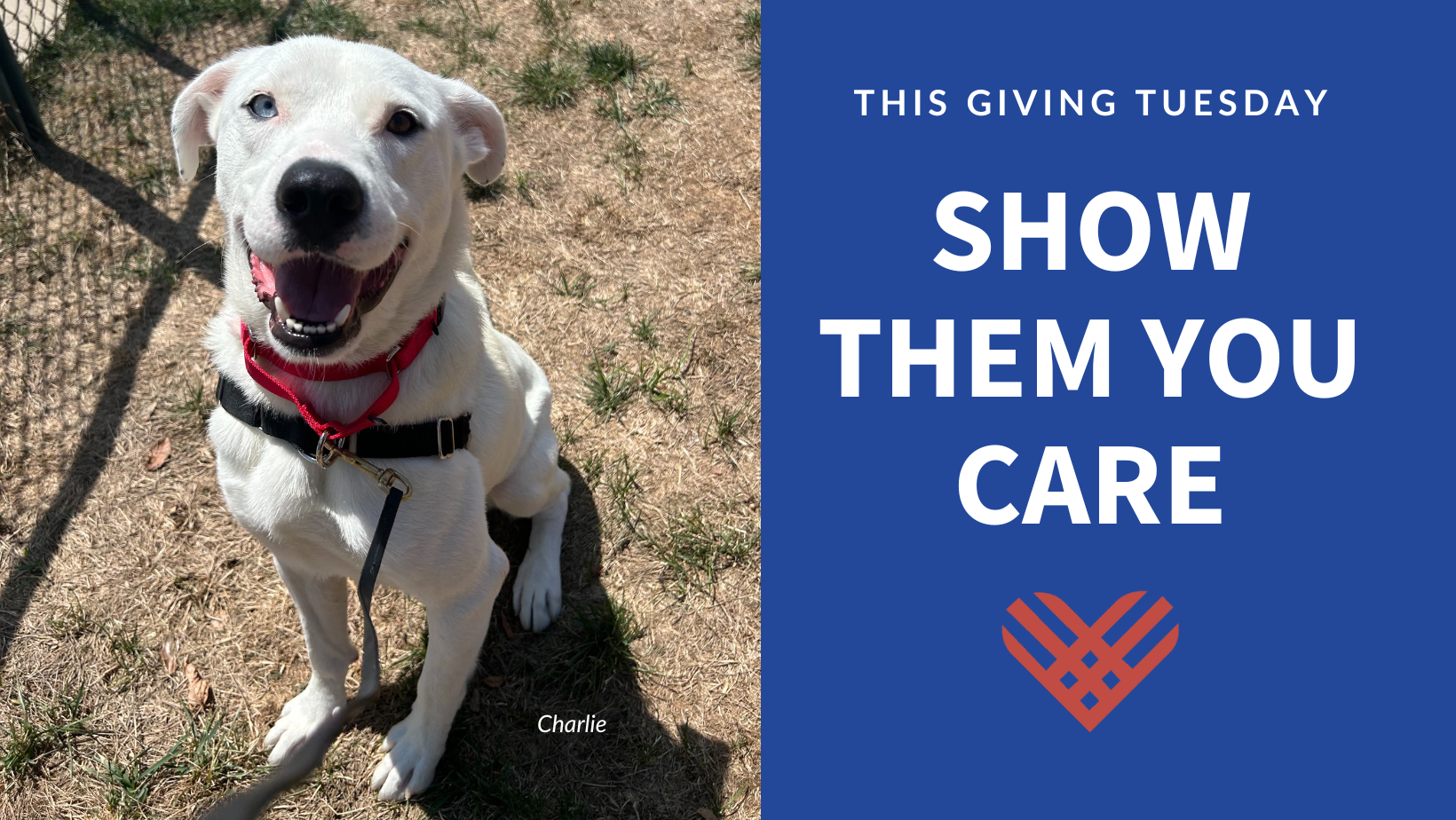
Perhaps you’ve been following a particular companion animal we are helping but cannot adopt yourself. HSLC also has a Guardian Angel program that allows you to sponsor that animal’s adoption fee ($150 for a cat and $300 for a dog), increasing their chances of being adopted. Adoption sponsorships help to defray the cost of care while an animal is in our foster network. And, if you don’t have your heart set on a particular animal, HSLC can easily choose a pet for you that needs the most help.
HSLC is a foster-based animal rescue that does not operate a shelter and therefore does not incur the expenses associated with running a facility.
Animals are Counting on You
With economic conditions being difficult this year, we know that money might be tighter than normal. But the calls to help our furry friends never stop. You can assist us in getting the push we need to help more animals in the new year.
There are many ways you can donate to HSLC. You can make a one-time donation or start a monthly donation online. Note that you can make your gift in honor or memory of a loved one. Or you can donate from your donor-advised fund — an increasingly popular way to express your support for the causes that mean most to you. Thank you for making a life-saving difference!
You may also like 4 Tax-Savvy Ways to Support HSLC Before Year-End.
*2022 figure; reflects discounts from our wonderful vet partners




